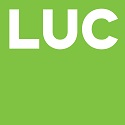Stroudwater Navigation Missing Mile project, Stroud, Gloucestershire (OASIS ID wessexar1-298063)
Wessex Archaeology, 2018. https://doi.org/10.5284/1046763. How to cite using this DOI
Data copyright © Wessex Archaeology unless otherwise stated
This work is licensed under the ADS Terms of Use and Access.
Primary contact
Wessex Archaeology
Portway House
Old Sarum Park
Salisbury
SP4 6EB
UK
Tel: 01722 326867
Fax: 01722 337562
Resource identifiers
- ADS Collection: 3013
- DOI:https://doi.org/10.5284/1046763
- How to cite using this DOI
Overview
The survey demonstrated the presence of several anomalies of archaeological interest, primarily in the north of the survey area, with several more discrete areas of possible archaeology throughout the site.
The anomalies identified as being of archaeological interest are thought to be ditch like features that may be associated with an enclosure. Given the propensity of Romano-British activity in the area, it is possible that this may date to a similar period. However, this is not apparent from the results of this geophysical survey. The precise layout of these features is thought to have been obscured by later medieval cultivation in the form of ridge and furrow ploughing. The notably increased magnetic background surrounding these anomalies which may be that heavily truncated, are present in this area.
Part of the Stroudwater Navigation canal has been identified in the north-western corner of the Site and a broad area of an increased magnetic response has been interpreted as the remains of a possible towpath. In addition, several anomalies have been identified across the site as well as several former field boundaries.
The data archive consists of geophysical survey data text files and an AutoCAD interpretation file with georeferenced .TIF images.






